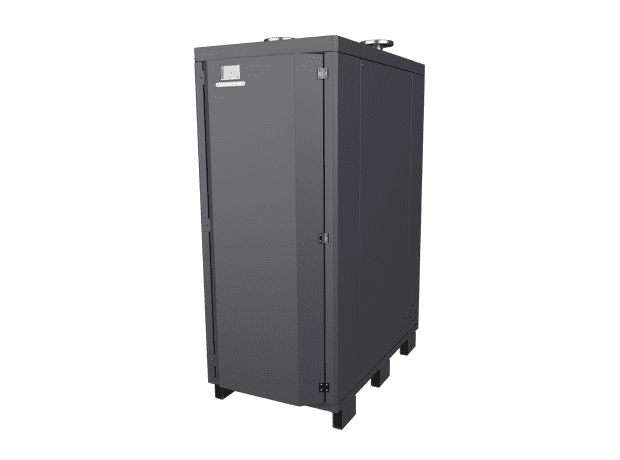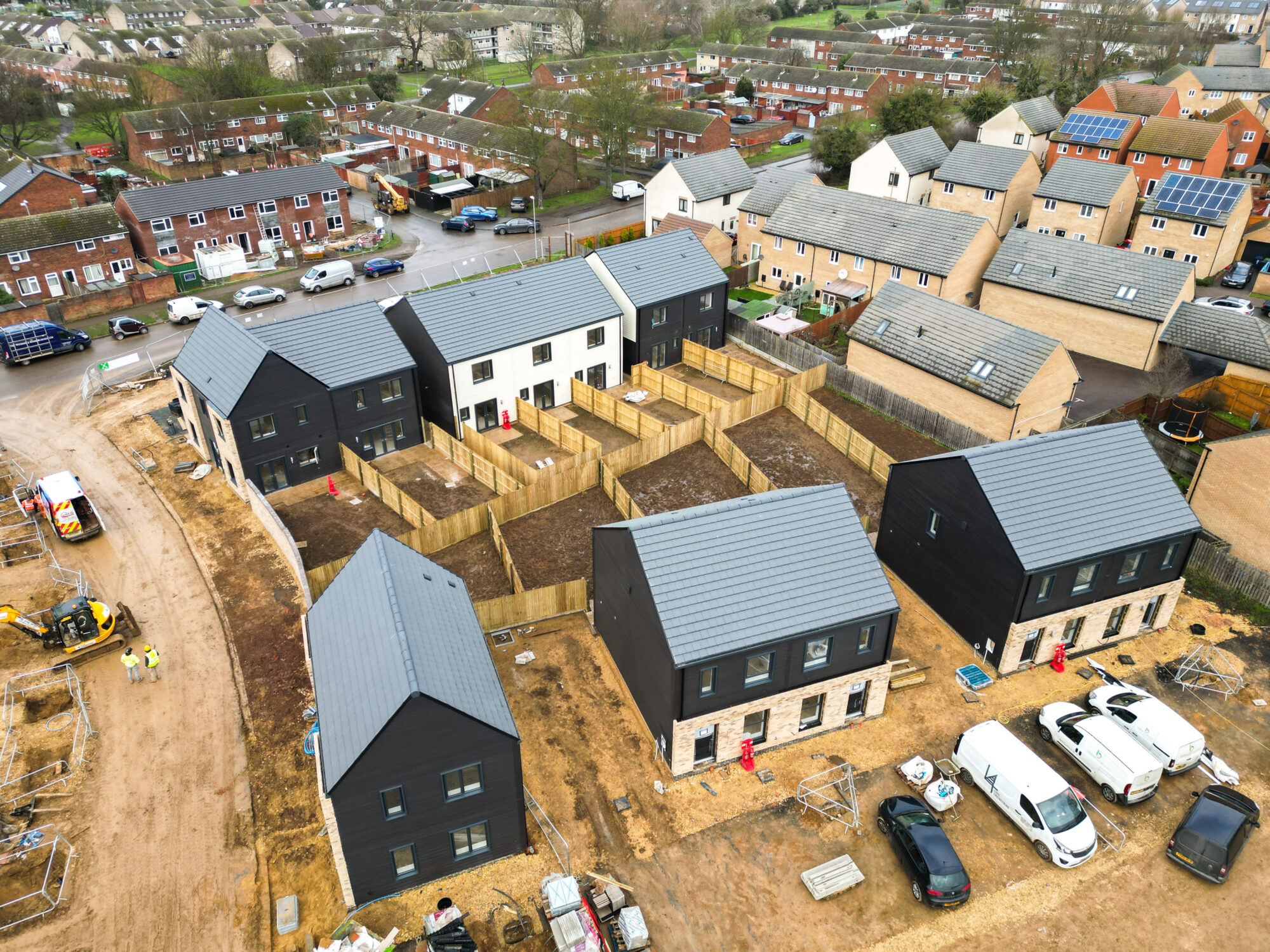Establishing these standards is essential to fire up the heat pump market and drive investment in the sector
The Government has published its long-awaited proposals on the Future Homes Standard, establishing new building regulations to apply from 2025. Newly built homes from this date will need to be “net zero ready” with an uplift in fabric and energy efficiency standards, requirements for zero-carbon heating, and requirements to mitigate overheating.
The proposals are of fundamental importance to the expansion of the heat pump market for rapidly developing the skills base and supply chain and for major investment in the sector. Amongst a slew of consultations on buildings and energy efficiency in recent months, these proposals to ban boilers in all new homes in two years’ time are without doubt the most important. Creating a 200,000-home market for heat pumps overnight will be a major catalyst for change across the sector and a major step towards the 600,000 heat pumps a year target in 2028.
The consultation confirms that heat pumps provide a pathway to building highly efficient homes which are better for the environment and fit for the future. It states: “We found no practical way to allow the installation of fossil fuel boilers while also delivering significant carbon savings. As such, we do not expect fossil fuel heating, such as gas, hybrid heat pumps and hydrogen-ready boilers, will meet these standards.” This is a further indication that hydrogen home heating is unviable.
Opening up the new build market for heat pumps is particularly important for Kensa and other developers of networked heat pumps. Much like centralised heat networks, our technology requires adoption by whole areas and streets to achieve the major economies of scale possible. This is extremely difficult to achieve in the private retrofit market at present for obvious reasons. As such, a combination of the new build market and social housing retrofit will be critical to the mass deployment of networked heat pumps and driving the cost reductions that will allow roll-out in the private retrofit sector towards the end of the decade.

Tamsin Lishman, CEO of The Kensa Group believes that establishing these standards is essential to fire up the heat pump market and drive investment in the sector. She commented:
The publication of proposals requiring all new homes to be low-cost, low-carbon and energy efficient to run is a major step forward for decarbonising homes. This new standard will boost heat pump installations drastically, expanding the market from 50,000 to over 250,000 rapidly, providing companies like Kensa with the confidence to go ahead and invest heavily in new manufacturing facilities and the continued development of our supply chains.
It is crucial that these proposals intend to make heat pumps and low-carbon heat networks the default options for heat in new homes, effectively banning new gas grid connections and so-called hydrogen-ready boilers from installation. Allowing the continued installation of these technologies in new homes would simply have maintained confusion about the future of home heating and short-changed hundreds of thousands of new buyers who would have inevitably had to replace their fossil fuel heating system in the years to come.
Tamsin continued:
In a busy policy landscape, establishing these standards is the single most important step the government can take to fire up the heat pump market and drive investment in the sector. As a developer of networked heat pumps, a heat pump in each home connected to a shared networked in the street, Kensa is confident the Future Homes Standard will now lead to a major expansion in the deployment of this technology, combining the best of heat networks and individual heat pumps.
The benefits of Networked Heat Pumps
Ground Source Heat Pumps (GSHPs) are the most efficient heating technology available, reducing energy consumption and running costs for homes. If deployed at scale, this will also lead to major reductions in peak electricity demand, reducing the need for investment in new power generation and an expanded electricity grid. Element Energy’s low carbon heat study models the impact that deploying different volumes of GSHPs in the UK would have on the electricity system by 2050. It found that if 38% of all heat pumps were GSHPs, compared to the current deployment level of 15%, a massive 4GW could be shaved off-peak demand, and £5 billion/year in electricity system costs could be achieved.
Kensa believes that networked heat pumps will be the optimal low-carbon heating for up to 60% of UK homes. Our project installations demonstrate that networked GSHPs work in all housing types, including ‘hard to treat’ properties, such as terraced streets, tower blocks and tenements.
A new report from the US Dept. of Energy mirrors many of the findings from the UK-based Element Energy report on the major benefits of replacing current domestic heating systems with networked GSHPs. This includes a 10-13% reduction in total electricity system costs by 2050, 7.3 billion tonnes of CO2 saved, an 11-13% reduction in electricity generation, and a 33% reduction in grid expansion requirements.
The Future Homes Standard consultation also recognises the benefits of heat networks, stating, “heat networks can be highly efficient ways of delivering heat because the heat pumps on the network can be paired with thermal stores, allowing the heat to be produced at times of low-cost, low-carbon electricity; such function also reduces peak demand on the local electricity grid. The heat pumps in heat networks often have a higher seasonal coefficient of performance and can be run to optimise their coefficient of performance.”
Networked Ground Source Heat Pumps offer an easy consumer transition to decarbonised heat at a scale replicable to the gas grid, practically, sustainably and affordably. In people’s homes, an innovative microwave-sized box (ground source heat pump) in a cupboard provides hot water and heating. In the street, homes connect to pipes that provide heat from the ground, paid for, owned, and maintained by utility companies. Consumers pay a small monthly connection fee, like with gas today.
Kensa is already demonstrating the benefits of Networked Ground Source Heat Pumps to the new build sector, as seen in the recent California Meadows project, an affordable housing development by The Longhurst Group. The project utilised networked ground source heat pumps with the ground array infrastructure funded by Kensa, allowing them to provide the benefits of highly efficient ground source heat pumps at a price comparable to air source heat pumps.
Low-cost and low-carbon cooling
Networked GSHPs can also provide low-cost, low-carbon cooling and heating without contributing to air pollution or climate change. Warmer summers, improved insulation, and larger windows increase the need for cooling in modern new builds.
The Future Homes Standard consultation acknowledges: “In December 2021, a new legal requirement was introduced in the Building Regulations (Part O) to reduce the risk of overheating in new residential buildings. We expect the majority of housebuilders will now have had experience applying Part O to real projects…As such, we see this as a suitable time to seek views and evidence on Part O.”
If a cooling system expels heat from a building into the surrounding air, this can raise the local air temperature, exacerbating the need for more cooling. Any systems that produce carbon emissions are ultimately unhelpful in the fight against climate change.
The by-product of extracting heat from the ground during the winter months is a large area of pre-chilled ground, which is conveniently piped to the heat pump in each property to provide low-cost passive cooling during the summer.
For properties that need even more cooling, it is simple to reverse the heat pump so that it actively cools the property and sends the waste heat into the ground, effectively re-charging it for more efficient heating the following winter.







